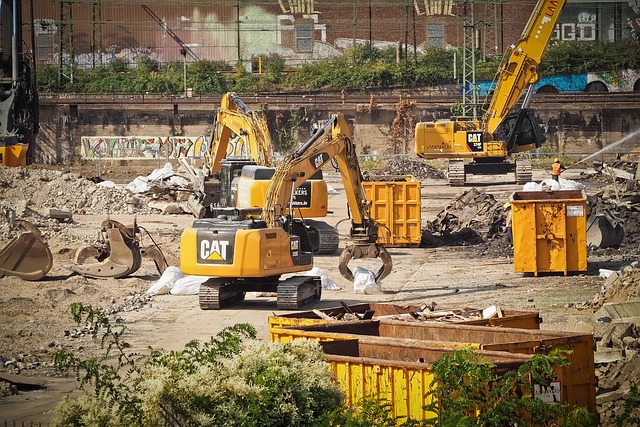Precision underground mapping leverages advanced technologies like ground-penetrating radar, LiDAR, and 3D modeling to create detailed digital replicas of underground spaces. This method enhances excavation safety by identifying hazards, planning alternative routes, and providing real-time updates, reducing damage to hidden infrastructure and project delays. By integrating sensors, cameras, and continuous monitoring, Real-Time Monitoring Systems (RTMS) further foster a culture of safe excavation practices, ensuring timely project completion without compromising safety standards.
In the construction industry, excavation projects pose significant risks, demanding innovative strategies to ensure safety. This article explores cutting-edge methods to minimize these dangers, focusing on precision underground mapping as a cornerstone of modern risk mitigation. We delve into advanced technologies like 3D modeling and sensor data, real-time monitoring systems, predictive analytics, and adaptive safety protocols. By leveraging these tools, the industry can unlock safer excavation practices, transforming traditional methods and fostering a culture of proactive safety.
Precision Underground Mapping: Unlocking Safer Excavation Practices
Precision Underground Mapping is transforming excavation practices by providing detailed, accurate data of underground structures and conditions. This advanced technology employs specialized sensors, ground-penetrating radar, and LiDAR to create comprehensive 3D models of the subterranean landscape. By identifying potential hazards such as buried utilities, unstable soil formations, and historical artifacts, precision mapping empowers professionals to plan excavations with enhanced safety measures.
With real-time data and precise visualizations, contractors can navigate complex sites more effectively, reducing the risk of damage to underground infrastructure and ensuring worker safety. This method not only minimizes costly delays caused by unexpected obstacles but also fosters a culture of responsible excavation practices, leading to successful projects without compromising integrity or security.
– The Role of Advanced Technology in Risk Mitigation
In today’s digital era, advanced technology plays a pivotal role in minimizing excavation risks. One such game-changer is precision underground mapping, which involves utilizing sophisticated sensors and 3D modeling to create detailed images of underground structures. This innovative approach allows professionals to navigate labyrinthine networks of utilities, pipelines, and other subterranean elements with unprecedented accuracy. By relying on real-time data, contractors can avoid costly mistakes, such as damaging hidden infrastructure, thereby enhancing safety and efficiency.
Furthermore, precision mapping enables informed decision-making before excavation begins. Contractors can identify potential hazards, plan alternative routes, and tailor their strategies accordingly. This proactive approach not only minimizes risks but also saves time and resources, ensuring projects are completed promptly without sacrificing safety standards. In the world of excavation, embracing cutting-edge technology like precision underground mapping is essential to foster a safer and more successful construction process.
– How 3D Modeling and Sensor Data Enhance Safety
Precision underground mapping, enabled by advanced 3D modeling and sensor data, is transforming excavation safety. By creating detailed digital replicas of underground spaces, construction teams can anticipate potential hazards, plan more effective strategies, and mitigate risks before breaking ground. These models incorporate data from various sensors, such as LiDAR scanners and GPS devices, to capture complex topography, utility locations, and even geological formations.
This integrated approach allows for a comprehensive understanding of the excavation site, enabling informed decision-making. For instance, 3D modeling can help identify buried structures, underground pipelines, or unstable soil conditions that might otherwise go undetected. Sensor data further enhances safety by providing real-time updates, ensuring that plans remain current and relevant as excavation progresses. This synchronization between technology and human expertise fosters a safer working environment below ground.
Real-Time Monitoring Systems: An Eye on the Underground
Excavation projects, while crucial for various industries, come with inherent risks that demand meticulous planning and innovative solutions. One such game-changer in the field is the adoption of Real-Time Monitoring Systems (RTMS), offering an unprecedented level of oversight and safety. These advanced technologies provide a comprehensive view of underground structures, enabling project managers to make informed decisions instantly.
RTMS incorporates precision underground mapping, utilizing cutting-edge sensors and cameras to create detailed digital representations of subterranean environments. This real-time data allows for the early detection of potential hazards, such as buried utilities or unstable soil conditions. By continuously monitoring excavation progress, project teams can quickly adapt their strategies, ensuring minimal disruptions and enhancing overall safety during the digging process.
In conclusion, integrating cutting-edge methods like precision underground mapping and real-time monitoring systems offers a safer and more informed approach to excavation projects. These advanced technologies significantly minimize risks by providing detailed 3D models and real-time data, ensuring that construction teams can navigate the underground landscape with enhanced accuracy and confidence. Adopting these innovative practices not only protects against potential hazards but also streamlines project timelines and budgets, making them essential tools in modern construction management.
